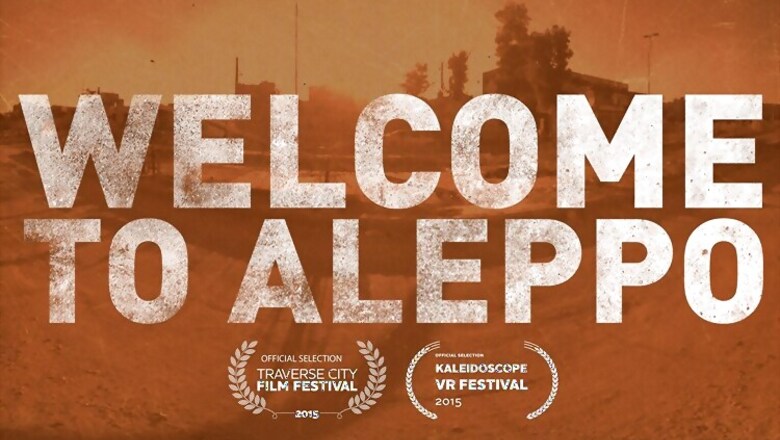
views
Washington: Bombed-out buildings tower overhead, and rubble is piled high in the deserted streets of Syria's onetime economic hub Aleppo. Gunshots can be heard in the distance.
The destruction of four years of civil war is overwhelming -- and then you switch your phone off.
"Welcome to Aleppo" is one of more than a dozen virtual reality videos available on a mobile app launched this month by Los Angeles-based media company RYOT.
The project offers a 360-degree window into the war-torn city, captured with a camera made up of six GoPros, then stitched together to create a full panoramic view of the scene. A Syrian woman narrates a three-minute tour.
Users -- watching on a mobile device or wearing a virtual reality headset -- can shift their viewpoint at will -- looking up, down and even behind them to take in collapsing buildings and ruined streets by moving or tilting their device.
"I've always struggled to show the scale of devastation after a disaster. With virtual reality, you get an opportunity to really see scale and scope," said co-founder Bryn Mooser.
"It brings people directly to far-off places or places in crisis so they can experience firsthand what that looks like."
RYOT's virtual reality app offer viewers a variety of immersive experiences, from post-earthquake Nepal to the US-Mexico border fence, and most recently an up-close look at a migrant camp in Calais, northern France.
Mooser and co-founder David Darg say they hope their virtual reality films will increase awareness and generate money for aid groups working on the ground.
The films include a call for the audience to take action. The Syria film directs users to RYOT.org/Syria, where they can donate to humanitarian organizations.
Oliver Money with the International Rescue Committee, one of the groups linked to the Syria project, said virtual reality could "bridge that divide" between crises and donors.
For IRC and other aid groups, it is a "huge challenge" to keep crises like Syria in the public consciousness, Money said.
"Something that can help bring that home to people in a more immersive way has the potential to be very powerful," Money told AFP.
VR: fad or here to stay?
Big-name companies are buying into the power of virtual reality.
Last year, Facebook bought Oculus VR in a deal valued at $2 billion. And the New York Times has released its own virtual reality mobile app, sending more than one million Google Cardboard headsets to subscribers earlier this month.
For a full virtual reality experience, users of VR apps can pair their smartphone with a headset, an option that is more available and affordable than many might think. The Google Cardboard viewers cost as little as $4, and the higher-end Samsung Gear VR is on sale for $99.
RYOT is embracing the technology full-on. Their first effort came six months ago in Nepal. Darg arrived in the country to film less than 48 hours after the quake hit on April 25, with a grapefruit-sized 360-degree camera in his bag.
The resulting four-minute "Nepal Quake Project" was shown at film festivals across the country and helped raise more than $100,000 for humanitarian aid.
"A lot of people took the headset off and were in tears," Darg said.
Darg, who has been responding to disasters for over a decade as a journalist and aid worker, said he thinks virtual reality technology will revolutionize non-fiction storytelling.
"We're able to create that connection in a deeper way, and that is the most exciting thing," Darg said. "Being able to transport someone there -- it's a game-changer."
John Trybus, director of Georgetown University's Center for Social Impact Communication, says while virtual reality has a lot of potential to enhance storytelling, it may not be ready to go mainstream.
"Sight and sound are some of the most powerful human senses, and this technology activates those like nothing else," Trybus said.
"But it's not ready for prime time as a sustainable engagement strategy just yet. For most organizations, the cost is still prohibitive. It takes a lot of power to do it effectively."




















Comments
0 comment